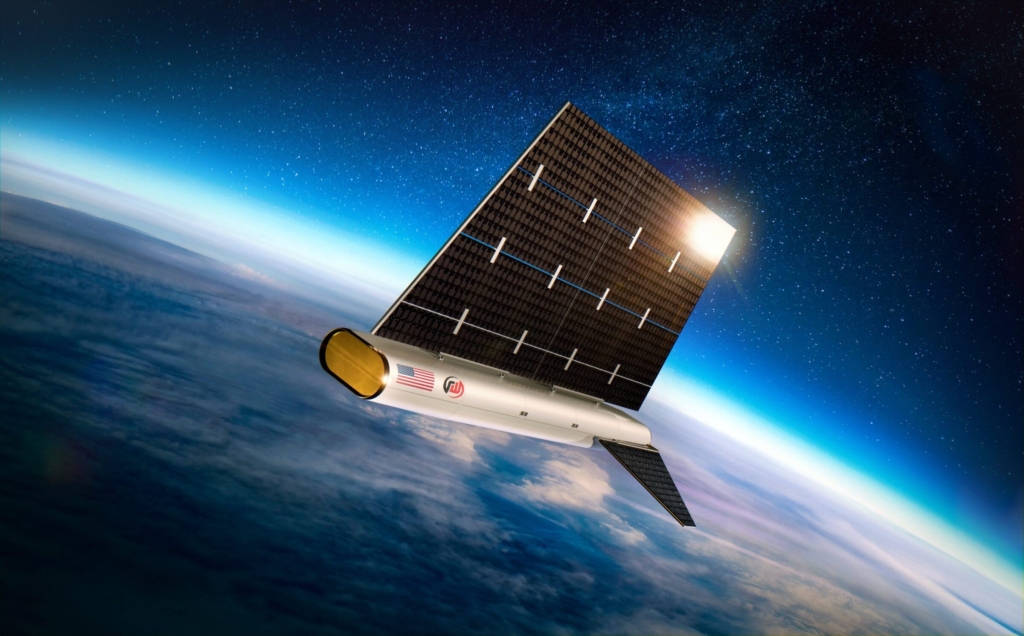DARPA taps Redwire to build world-first air-breathing satellite for very low Earth orbit

November 21, 2025

Redwire, a Florida-based space technology firm, has secured a $44 million contract from the US Defense Advanced Research Projects Agency (DARPA) to complete a satellite designed to operate in very low Earth orbit, a region long viewed as too hostile for sustained missions.
Announced on 19 November, the award expands a 2024 agreement and moves DARPA’s experimental Otter programme into its final manufacturing phase.
The contract tasks Redwire with finishing a spacecraft that could reshape how militaries and governments use orbital systems at a time of rapid competition in space and rising demand for faster, more resilient intelligence.
Why very low Earth orbit matters for defence and intelligence
Conventional satellites typically operate above 500 kilometres, where atmospheric drag is minimal. Below that altitude, drag rises sharply, rapidly pulling spacecraft down unless they carry significant fuel reserves.
This has traditionally made VLEO, roughly 90 to 450 kilometres, an unattractive and short-lived operating zone. Yet flying closer to Earth brings clear advantages, including sharper imaging, faster data links and more frequent revisits — qualities that appeal to defence planners seeking quicker intelligence cycles and better tracking of mobile targets.
Redwire’s Otter spacecraft aims to overcome VLEO’s historic limitations using the company’s SabreSat platform, a small satellite designed to sit between traditional space systems and high-altitude airborne assets.
How Redwire’s air-breathing VLEO propulsion system works
At the heart of the mission is a propulsion system that captures trace atmospheric molecules as the spacecraft skims the upper atmosphere. These molecules are fed into an electric thruster to generate continuous propulsion without relying exclusively on stored propellant.

If successful, the satellite could sustain its orbit far longer than current systems operating at similar altitudes. The propulsion hardware is being developed under a separate DARPA contract awarded in 2024 to the Electric Propulsion Laboratory, which is supplying the intake assembly and thruster.
Air-breathing propulsion has been studied for years but never demonstrated at scale in orbit. DARPA’s decision to progress the Otter mission signals confidence that the technology is ready for a full test.
Military advantages of operating satellites in very low Earth orbit
Space is becoming more crowded and more contested, particularly in traditional low Earth and geostationary orbits. VLEO offers a different regime with distinct benefits, including:
- Shorter communication delays for time-critical tasks
- Higher-quality imaging with smaller optical systems
- Improved tracking of mobile assets such as vehicles, vessels and missile units
- Lower debris risk, as fragments rapidly decay and burn up
These attributes explain why the US, Europe, Japan and China have all pursued VLEO test missions. For the Pentagon, the approach also supports multi-domain operations, where air, space, cyber and ground assets operate more closely together.
Redwire positions SabreSat as a bridge between airborne surveillance platforms and higher-orbit satellite networks.
Love innovation and technology? Discover more of our stories here.
DARPA’s Otter VLEO satellite moves into final build and integration
With the latest $44 million award, Redwire will complete Otter’s development, integrate the propulsion system and prepare the satellite for launch. DARPA has not disclosed a flight date.
According to Redwire, the mission aims to prove that a satellite can remain in VLEO long enough to be operationally useful. It will also validate new materials, avionics, autonomous navigation and pointing technologies designed to withstand the stronger aerodynamic forces at these altitudes.

The SabreSat platform is built in the United States with an emphasis on endurance and manufacturability. If successful, the design could support defence, intelligence and communications missions.
Redwire expands VLEO technology with ESA Skimsat and European Phantom platform
Redwire is advancing VLEO capabilities on both sides of the Atlantic. Its European division is developing Phantom, the satellite platform for the European Space Agency’s Skimsat mission, which aims to demonstrate sustainable, low-cost VLEO operations.
Phantom, built in Belgium, is designed to remain in VLEO for up to five years, a notable target given the traditionally short lifetimes at these altitudes. Redwire’s Belgian facility has a long heritage with ESA missions, including the Proba series.
The company is also supporting DeepSat, a commercial Earth-observation startup planning a dual-use VLEO constellation with in-orbit AI and high-revisit capability, supplying digital modelling and simulation tools for system design.
What a successful Otter mission could mean for future VLEO satellite systems
Although Otter is a demonstration mission, a successful flight could pave the way for a new class of satellites capable of operating closer to Earth for long durations.
Such systems could support maritime monitoring, disaster response, mobile target tracking and tactical communications. Redwire’s mix of US and European projects underlines the growing international focus on VLEO as a complement to existing space architectures rather than a replacement.
















